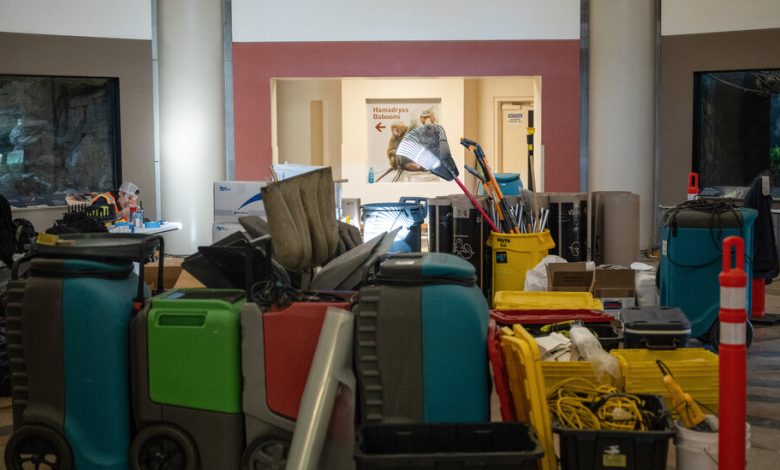Prospect Park Zoo Remains Closed After Severe Flood Damage

Two weeks after being inundated with more than seven inches of rain and runoff from Tropical Storm Ophelia, the Prospect Park Zoo in Brooklyn remains temporarily closed for repairs with no reopening date scheduled, zoo officials said.
The zoo, which is slightly below street level along Flatbush Avenue on the northeastern side of Prospect Park, keeps much of its infrastructure in basements and subbasements, including boilers; electrical equipment; heating, ventilation and air-conditioning; and “aquatic life support systems,” according to a statement from the zoo on Saturday. All were affected as storm drains backed up and the basements were flooded with up to 25 feet of water “at an unprecedented rate” during the storm on Sept. 29, the statement said.
No animals were harmed or had to be moved, but the flooding caused “millions of dollars of damage,” said Craig Piper, the vice president of city zoos for the Wildlife Conservation Society, which runs the Prospect Park Zoo, along with the Bronx, Queens and Central Park zoos and the New York Aquarium. “As we move from triage to restoration of the facilities, we will continue to assess when we will reopen to the public.” The zoo’s extended closure was previously reported by Gothamist.
The water has been pumped out of the basements and the zoo is now drawing its power from generators; it will use temporary boilers for heat as needed, the statement said. Photos inside zoo buildings showed cleanup and restoration equipment being stored next to animal exhibits.
All of the Wildlife Conservation Society’s facilities closed on the day of the storm after Gov. Kathy Hochul of New York declared a state of emergency, the organization said. (At the Central Park Zoo, a female sea lion known as Sally used the flooding to escape briefly from her enclosure.) But the other zoos were not as affected by flooding as Prospect Park was, the society said, and they reopened the next day.
The Prospect Park Zoo also suffered significant damage during Hurricanes Henri and Ida in 2021, Mr. Piper said, adding that “we expect these extreme weather patterns will continue in the future” because of climate change. The zoo’s restoration will be aimed at preventing future flooding, he said.
Officials have stressed the need to improve the city’s infrastructure to handle more frequent and more severe storms. The record-breaking rainfall last month shut down much of the subway, grounded flights, swamped streets, and caused closures and travel delays across the New York metropolitan area.
It was the second-wettest September in New York City history, according to data from the National Weather Service.
Several days before Ophelia, a heavy storm dropped about an inch of rain as thousands of people gathered for a concert on the Great Lawn in Central Park. Officials said that the heavy equipment used to produce the concert and the foot traffic it attracted “fully damaged” a third of the lawn during the downpour, resulting in its closure until April, six weeks earlier than its usual annual closure.




